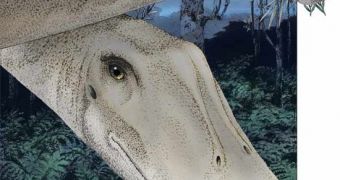According to a recent scientific investigation, it would appear that the skulls of dinosaurs in some species underwent massive transformation from when they were small offspring until they became adults. Proportionally speaking, like in most other animals, dinosaur babies had larger eyes and smaller faces than their parents did, but this ratio changed considerably as they progressed in age, experts now propose. In the new study, it was discovered that a species of large, plant-eating sauropods also showed the same alignment to the overall trend, LiveScience reports.
The new research was conducted on fossils recovered from Pittsburgh's Carnegie Museum of Natural History. The remains have been there for a while, but until now no one paid too much attention to them. The researchers behind this study looked at the bones more closely and were thus able to determine that the skulls of baby dinosaurs differed considerably from their adult forms. The species that was analyzed is a type of plant-eating sauropod called Diplodocus. The research would seem to suggest that the skull of this species underwent large transformations as the animals got older and more mature.
In a statement he published this week, paleontologist John Whitlock, who is based at the University of Michigan, said that the discovery took so long to make simply because baby sauropod fossils are notoriously difficult to come by. Juvenile skulls are even rarer, and so he and his group were lucky to have had the chance to study one. Expert Jeffrey Wilson, who is also based at the University of Michigan, and Carnegie Museum scientist Matthew Lamanna, also participated in this study. A paper accompanying the findings has been published in the March issue of the respected scientific Journal of Vertebrate Paleontology.
Unlike the vast majority of other sauropods, sauropods had long, square snouts, as opposed to the rounded and pointed ones of other giant dinosaurs. “Up until now, we assumed juveniles did too,” says Wilson. Although this skull is plainly that of a juvenile Diplodocus, in many ways it is quite different from those of the adults. What was unexpected was the shape of the snout – it appears to have been quite pointed, rather than square like the adults. This gives us a whole new perspective on what these animals may have looked like at different points in their lives,” Whitlock adds. The expert is also a doctoral candidate at the Museum of Paleontology.

 14 DAY TRIAL //
14 DAY TRIAL //